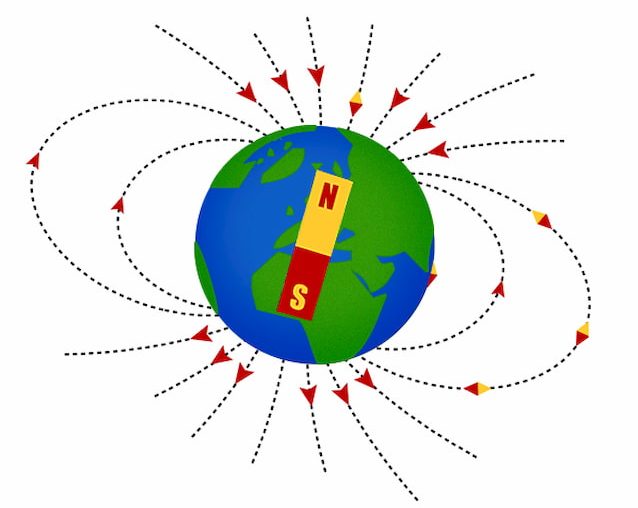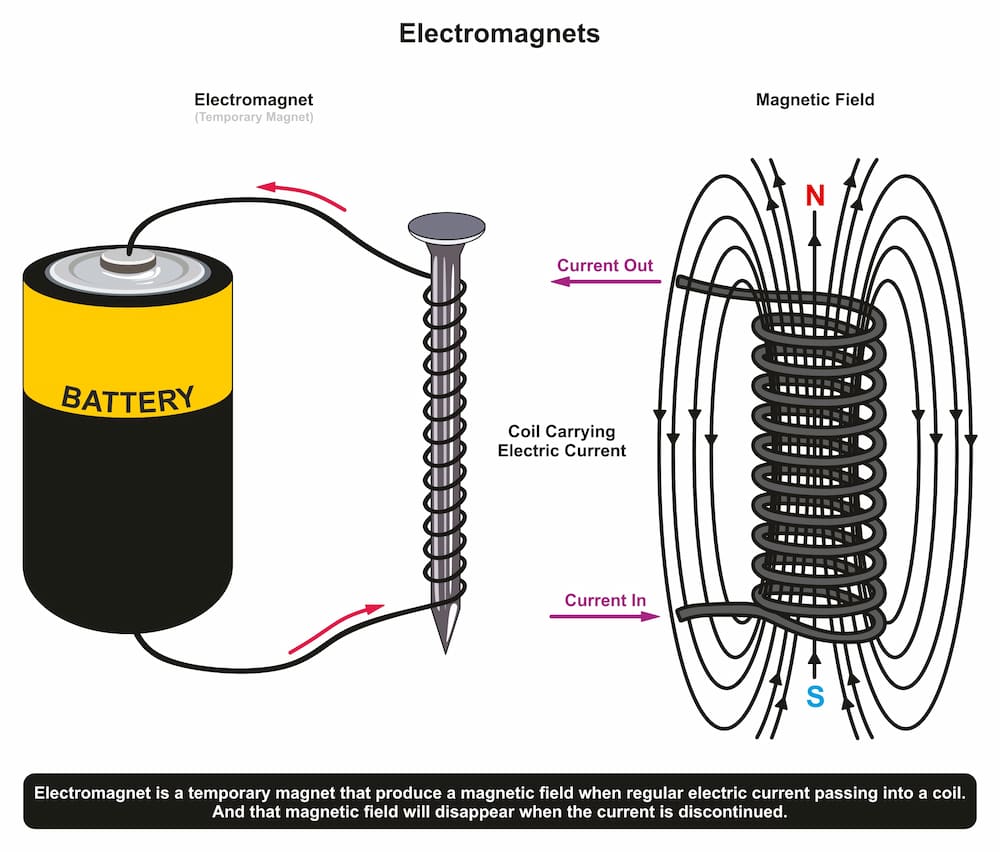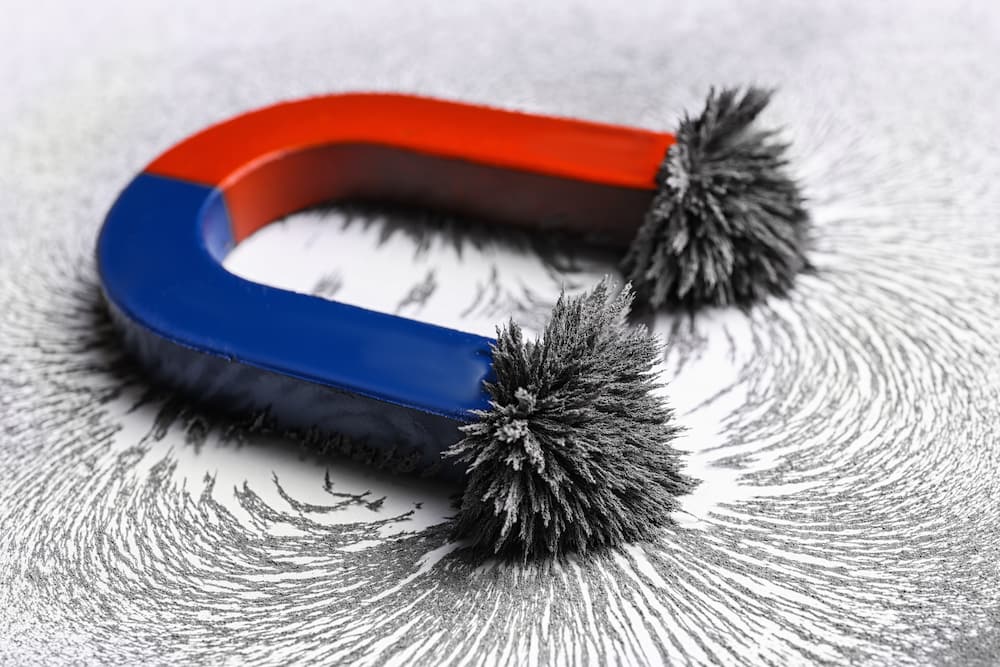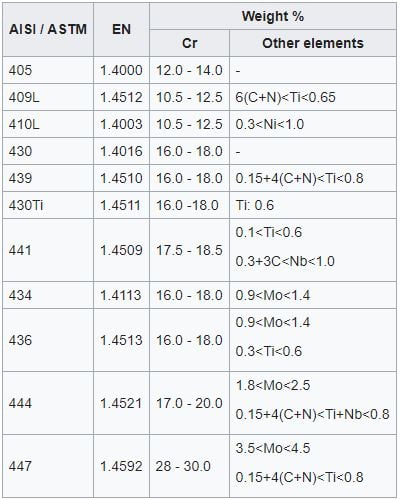Magnetic metals & non-magnetic metals both play an important role in engineering. Magnetism is the basis for many applications. At the same time, this property may also be unwanted in certain circumstances.
If you’re here for quick answers, then here you go – the most common magnetic metals are iron, nickel, cobalt, some rare earth metals, and the majority of steels. Stainless steel can be magnetic or non-magnetic, depending on its chemical composition. Most other metals are considered non-magnetic but the topic is slightly more complex than that. Therefore, it is important to understand magnetism in general, the types of magnets, and in which way metals can interact with magnets. Let’s begin…
What Is Magnetism?
In layman’s terms, magnetism is a force that can attract or repel magnetic materials. Magnetic fields that permeate different mediums mediate this force.
Magnetism is a property of certain materials by default. Some materials, though, can be magnetised or demagnetised depending on the requirements.
What Creates Magnetism in Metals?
Like an electric current, magnetism is caused by electrons at the elementary level. Electrons have spin, which creates a tiny magnetic dipole.
When these spins are balanced, the net force is zero. But in the case of a large number of unpaired electrons, this infinitesimally small magnetic moment becomes large. As a result, it creates a noticeable magnetic field around the metal.
Electric current is also capable of creating magnetic fields and vice versa. When an electric current passes through a wire, it creates a circular magnetic field around the wire. Similarly, bringing a magnetic field near a good conductor of electricity, electric currents start flowing in the conductor.
This amazing relationship between electricity and magnetism has resulted in many ingenious devices and applications.
Types of Magnets
There are various classifications for magnets. One way to differentiate magnetic metals from each other is by how long their properties are active. Using this as our basis, we can classify magnets as:
- Permanent
- Temporary
- Electromagnets
Let’s take a deeper look at each of them.
Permanent Magnets
Permanent magnets produce a magnetic field due to their internal structure. They do not lose their magnetism easily. Permanent magnets are made of ferromagnetic materials that do not stop producing their magnetic field regardless of external influence. Thus, they are stable against demagnetising forces.
To understand permanent magnets, we must look at the internal structure of magnetic materials. A material displays magnetic properties when its domains are aligned in the same direction. Domains are the minuscule magnetic fields that are present in a material’s crystalline structure.
In ferromagnetic materials, the domains are perfectly aligned. There are various ways to align them but the most reliable method is to heat the magnet to a certain temperature. This temperature is different for materials and results in the permanent alignment of domains in one direction.

Due to similar conditions within the Earth’s core, it behaves like a permanent magnet.
Temporary Magnets
Temporary magnets, as the name suggests, only retain their magnetic properties under certain conditions. When these conditions are no longer present, they lose their magnetic fields.
Soft materials with low magnetic properties, such as annealed iron and steel, are examples of temporary magnets. They become magnetic in the presence of a strong magnetic field. They also portray low coercivity.
You must have seen how paper clips get attached to each other when a permanent magnet is nearby. Every paper clip becomes a temporary magnet, attracting other paper clips in the presence of a magnetic field. Once the permanent magnet is taken away, the paper clips lose their magnetic properties.
Electromagnets

Electromagnets are magnets that produce magnetic fields when an electric current passes through them. They have various use cases. For example, motors, generators, relays, headphones, etc., all use electromagnets.
In electromagnets, a coil of wire winds around a ferromagnetic core. Connecting the wire to a source of electricity produces a strong magnetic field. The ferromagnetic material further amplifies it. Electromagnets can be extremely strong depending on the electric current.
They also provide the ability to turn the magnetic force on and off with the press of a button. This is an extremely special property that helps us to use magnetic force in many applications.
Let’s take the example of a crane used to pick up scrap metal in a junkyard. With the help of an electromagnet, we can pick up scrap metal by passing an electric current through it. When we need to drop the pieces, all we have to do is turn off the electricity to the magnet.
Another interesting example of an electromagnet application is the Maglev train. In this application, a train lifts off the tracks and levitates. It is only possible when an electric current runs through electromagnets on the train’s body.
This considerably reduces the resistance faced by the train when in motion. Hence, these trains have very high velocities.
- Personal account manager
- Quality assurance
- Payment terms for companies
- On-time delivery by Fractory
Which Metals Are Magnetic?
There are various ways in which a metal may interact with a magnet. This depends on the internal structure of the materials. Metals can be classified as:
- Ferromagnetic
- Paramagnetic
- Diamagnetic
While magnets strongly attract ferromagnetic metals, they only weakly attract paramagnetic metals. Diamagnetic materials, on the other hand, show a weak repulsion when placed near a magnet. Only ferromagnetic metals are considered truly magnetic.
List of Magnetic Metals
Let’s take a look at some of the most well-known magnetic metals. Some of them are magnetic at all times. Other, like stainless steel, have magnetic properties only with a certain chemical composition.
Iron

Iron is an extremely well-known ferromagnetic metal. Iron is, in fact, the strongest ferromagnetic metal. It forms an integral part of the Earth’s core and imparts its magnetic properties to our planet. That is why the Earth acts as a permanent magnet on its own.
There are many aspects that contribute to iron’s magnetism. In addition to its net electron spin at the atomic level, its crystalline structure also plays an important role. Without it, iron would not be a magnetic metal.
Different crystalline structures result in different iron properties.
Iron is ferromagnetic in its body-centred cubic (bcc) alpha-Fe structure. At the same time, it does not show magnetism in face-centred cubic (fcc) gamma-Fe structure. Beta-Fe structure, for example, displays paramagnetic tendencies.
Nickel
Nickel is another popular magnetic metal with ferromagnetic properties. Like iron, its compounds are present in the Earth’s core. Historically, nickel has been used to make coins.
Today, nickel finds use in batteries, coatings, kitchen tools, phones, buildings, transport, and jewellery. A large portion of nickel is used to manufacture ferronickel for stainless steel.
Because of its magnetic properties, nickel is also part of Alnico magnets (made of aluminium, nickel, and cobalt). These magnets are stronger than rare-earth metal magnets but weaker than iron-based magnets.
Cobalt
Cobalt is an important ferromagnetic metal. For over 100 years, cobalt’s excellent magnetic properties have helped develop a variety of applications.
Cobalt can be used to produce soft as well as hard magnets. Soft magnets that use cobalt have advantages over other soft magnets. Namely, they have a high saturation point, Curie temperatures in the range of 950…990° Celsius. Thus, they can be used for high-temperature applications (up to 500° Celsius).
Cobalt, with its alloys, is used in hard disks, wind turbines, MRI machines, motors, actuators, and sensors.
Steel
Steel also displays ferromagnetic properties as it is derived from iron. Most steels will be attracted to a magnet. If needed, steel can also be used to make permanent magnets.
Let’s take the example of steel EN C15D. This grade of steel contains 98.81 to 99.26% iron. Thus, a very high percentage of this steel grade is iron. Hence, the ferromagnetic properties of iron transfer to steel.
Stainless Steel
Some stainless steels are magnetic, and some are not. An alloy steel becomes stainless steel if it has at least 10.5% chromium in it. Due to the varying chemical compositions, there are different types of stainless steel.

Ferritic and martensitic stainless steels are magnetic due to their iron composition and molecular structure.
Austenitic steels, on the other hand, do not display ferromagnetic properties because of a different molecular structure. This makes the suitable for use in MRI machinery.
The structural difference derives from the amount of nickel in its composition. Nickel strengthens the oxide layer for better protection against corrosion, but also changes the structure of stainless steel.
Rare Earth Metals
Along with the above-mentioned magnetic metals, compounds of some rare earth elements also have excellent ferromagnetic properties. Gadolinium, samarium and neodymium are all examples of magnetic rare earth metals.
Various magnets with different properties can be manufactured using the above metals in combination with iron, nickel and cobalt. These magnets come with specific properties necessary for certain applications.
For example, samarium-cobalt magnets are present in turbomachinery, high-end electric motors, etc.
Which Metals Are Not Magnetic?
Only a few metals in the periodic table are magnetic. Most other common metals are non-magnetic. Let’s take a look at some of them.
List of Non-Magnetic Metals
Aluminium
Aluminium’s crystal structure, similarly to lithium and magnesium, makes it non-magnetic. All three materials are popular examples of paramagnetic metals.
Although several types of aluminium corrosion can happen, it is known for its resistance to corrosive environments. This, along with its lightweight, makes it a useful metal in many industries.
Gold
Gold is a diamagnetic metal, like most other metals. In its pure form, gold is non-magnetic and shows only a weak repulsion towards magnets, like all diamagnetic metals.
Silver
Silver is another non-magnetic metal. This property makes identifying fake silver possible. If the “silver” coins or jewellery attract magnets, it clearly has to be something else.
Copper
Copper itself is not magnetic but interacts with magnets to some extent. Copper is diamagnetic, meaning that it repels magnetic fields. This property helps generate electricity in power plants.
When a magnet approaches copper, the magnetic field causes electrons on the surface to rearrange themselves and begin rotating. This spiral pattern creates resistance. In other words, the electrons create their own magnetic field for a very brief period, which slows down the magnet’s descent.
Conclusion
With a large enough magnetic field, all types of metals will interact with a magnet. This is because eddy currents are set up in metals when they are subjected to a moving magnetic field.
Using this principle, metal detectors are able to detect non-magnetic metals like gold, silver, copper and tin. But for most practical purposes, this interaction is not enough and limits the possible use cases.
We at Fractory offer laser cutting, CNC machining, and many other metal fabrication services for a wide range of materials, both magnetic and non-magnetic metals. Give our cloud manufacturing platform a go and upload your CAD files to see for yourself what materials are available. If you don’t find suitable material from the list, please contact our sales engineers, since they are most likely still able to accommodate your needs.




